This was published 1 year ago
Australia road trip tips: Eight rules for an affordable holiday (despite soaring petrol prices)
By Sue Williams
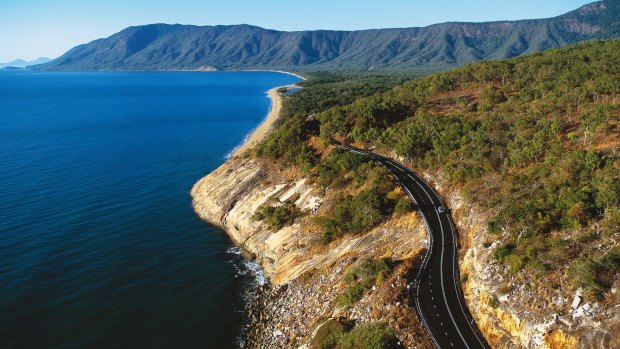
The road to Port Douglas in Tropical North Queensland.Credit: Tourism Australia
Skyrocketing petrol prices, the imminent return of the full fuel excise tax, roads damaged by catastrophic floods … just when the good old Australian road trip was at peak popularity it seems everything is conspiring to bring travellers around our highways and byways to a juddering halt.
But by observing some new road (trip) rules, what's emerged as our favourite post-pandemic holiday can still beckon, with cheaper bills at the bowser than you may have feared, and without as many disruptions.
In short, it's still possible for your next jaunt to be rather less Thelma & Louise and rather more Little Miss Sunshine.
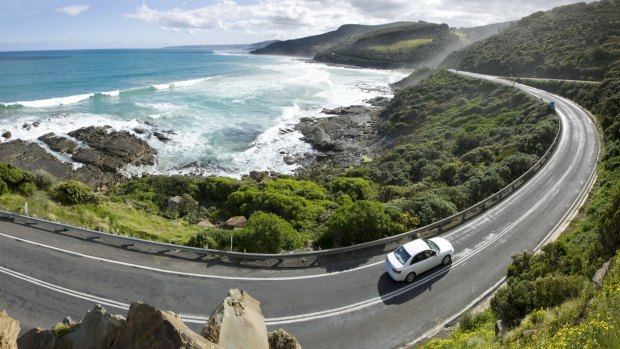
Victoria's Great Ocean Road.Credit: Rob Blackburn
"People are so keen to travel domestically as there are still challenges and complications with trying to fly overseas," says NRMA spokesman Peter Khoury (mynrma.com.au). "A road trip in Australia is the most reliable and safe option, whether up or down the coast or into regional areas.
"There is a lot of volatility with fuel prices that does make it harder to plan but we've found that it's not stopping people from taking road trips. But when fuel prices do have an impact, it just means people have less money to spend along the way on accommodation and entertainment."
Despite the extra cash outlay, Susannah Guthrie, a motoring writer at Nine's Drive.com.au website, says that while people are still keen to get out and about they can feel apprehensive about travelling overseas. A road trip, whether in someone's home state or further afield, is the perfect compromise.
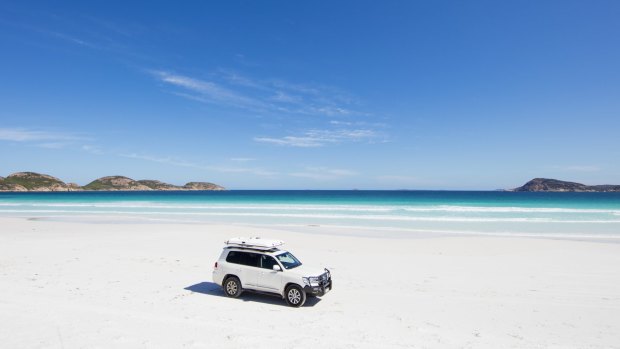
Lucky Bay, Cape le Grand National Park, WACredit: Sean Scott / Tourism Australia
"The high cost of petrol is making some people more hesitant about road trips, but it's not putting them off," Guthrie says. "The great Australian road trip is certainly not dead. As evidence, large, off-road-capable SUVs like the Nissan Patrol or Toyota LandCruiser – which aren't exactly economical in the fuel department – are attracting long customer wait times and even selling out before they arrive in the country.
"But at the same time, there are certain things motorists can do to make their journeys more economical and that can be very worthwhile [see our tips below]. It may involve more planning, and looking ahead, but there's still that desire to get out and about."
To help further with finances, the RACV (racv.com.au) recommends motorists shop around for the best fuel prices using the arevo app, or the RACV Fuel Tracker for real-time price updates.
While you're searching, it's also wise to check out the route in advance and keep on top of any road closures because of flood damage, repairs, bushfires and snow, says Andrew Kirk, principal technical researcher at the RACQ (racq.com.au). Listening to local radio on your journey to check for any updates is also useful.
"Also, always pay to have roadside assistance," says Kirk. "You can plan as much as you like, but you never know what might happen. Being stranded with your family in the middle of nowhere and have no option could end up a very expensive exercise."
Increasingly, you may need a plug and we don't mean for charging your mobile. While electric vehicles, the obvious solution to soaring fossil fuel prices, still only account for two per cent of all sales, that figure is steadily increasing.
EVs vary wildly, with some able to drive up to 600 kilometres without a fresh charge, while others may make only half that. As a result, if you're planning a road trip, it's important to plan carefully where you might be able to plug in for a charge.
"Chargers will also differ hugely with some locations having fast chargers, and others only having slower chargers that might take three, four, five, six hours to charge," Susannah says.
The charging infrastructure is improving, says Khoury, with the NRMA building the new network in partnership with the federal government, but it will take a while to complete. "We're putting chargers in holiday parks and seeing more destinations like wineries and resorts, having them," he says. "But it's always important to check in advance."
The last thing before you head off. Remember to protect your home, says Eleanor Colonico, RACV spokeswoman. "This might be as simple as letting a trusted friend know you'll be away, making sure all your doors and windows are locked properly and setting a timer for some lights to come on at night."
So, ready? Steady? But before you do go, study up Traveller's eight road (trip) rules and then get out there and enjoy some of the very best landscapes, experiences and locals our country has to offer.
RULE ONE: DRIVE YOUR DOLLARS FURTHER
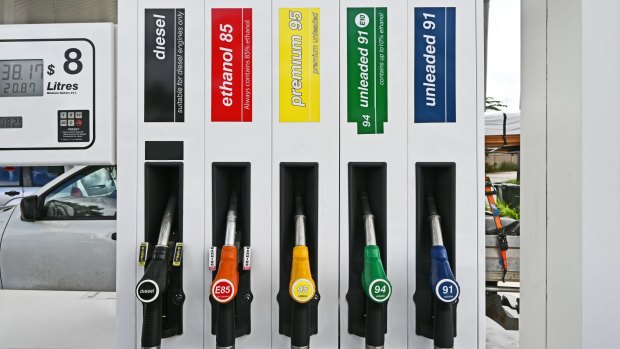
Credit: iStock
Rethink the way you drive to preserve fuel and save a small fortune that you can then splurge on accommodation, food, drink, seeing the sights along the way and sampling all the entertainment.
Avoid high revs, for instance, advises the RACV's Colonico. Automatic transmissions will shift up more quickly and smoothly if you ease back slightly on the accelerator once the car is moving. In a manual car, you should change up through the gears as soon as the car is comfortable with the next higher gear.
"Pay attention to what the traffic ahead is doing too, so you can avoid unnecessary acceleration and braking," she says. "Driving further from the car in front means you can see what is happening and you don't have to brake every time they do. As well as saving fuel this is a much safer way to drive."
And speeding is not only dangerous, it also uses more fuel. If it's safe to do so, cruising slightly below the speed limit is a good idea. Travelling at 100 km/h instead of 110 km/h can reduce fuel consumption significantly.
RULE TWO: SWITCH OFF WHILE YOU'RE SWITCHING OFF
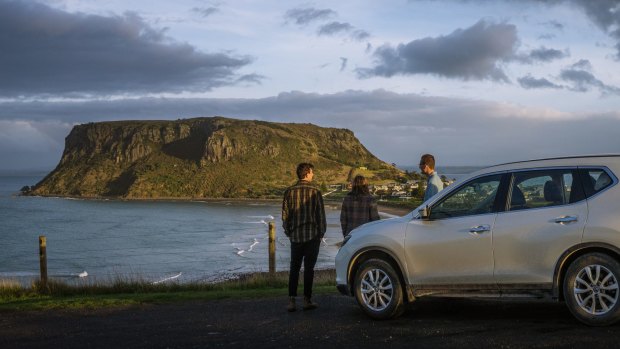
Credit: Jason Charles Hill / Tourism Tasmania
It's always a good idea to turn off your engine when you're waiting in a parked car, which will save more fuel than is lost in restarting it. Modern cars don't need to be "warmed up", and the increased wear and tear from this is negligible.
Consider driving less, too. Think about combining trips, car-pooling or using other modes of transport and perhaps replacing short trips with walking or cycling, suggests Colonico. And remember stop-start driving is very fuel-inefficient so plan your travel to avoid driving in congested traffic.
RULE THREE: LEARN TO LOVE YOUR CAR EVEN MORE
Always have your car serviced before you set off, recommends Drive's Guthrie. Get the oil levels checked, the tyre treads, the lights and also check whether there's liquid in the windscreen wipers, as well as making sure the car running as smoothly as possible. If it's running well, it will use less fuel. Check your tyre pressure, too. as you get on the road.
"If your tyres aren't inflated enough, that can add as much as two per cent onto your fuel bill," she says. "It can also be dangerous if you're planning a long trip on tyres which aren't in the recommended pressure range which can compromise the car's handling."
RULE FOUR: AVOID GOING FROM ROOF RACK TO RUIN
Do you really need all that extra luggage you're putting on a roof rack? Do the kids have to bring quite so many toys? Is it such a good idea to open all the windows as you're going along?
Extra parts on the outside of a car, or open windows when travelling at higher speeds, all increase wind resistance and fuel consumption. Heavy gear stashed in the boot will also use more fuel.
Putting on the air-con system, especially at very low temperature settings, also means the engine uses more fuel because it has to drive a big compressor. Try setting the system a couple of degrees higher or switch it off when it's not needed.
RULE FIVE: BEWARE OTHER ROAD USERS
Many people are road tripping for the first time, and they may not yet be very adept at manoeuvring that big campervan or towing that trailer or caravan. Give them a wide berth at all times – just in case.
The extra tourist traffic on rural and regional roads can also come as a shock to other regular users, like local pedestrians, cyclists and wildlife. The NSW Government's Centre for Road Safety (roadsafety.transport.nsw.gov.au) advises that one in every 41 casualty crashes on country roads involves a vehicle hitting an animal, like a kangaroo, wombat or stray stock.
It recommends slowing down and being prepared, especially near sunrise and sunset, and scanning the verges for any signs of life. But if an animal does suddenly appear in front of you, it's safer to hit it than to swerve and potentially lose control of your vehicle.
Report any injured wildlife to WIRES (wires.org.au) on 1300 094 737 or use the IFAW (ifaw.org/au) wildlife rescue app to find a suitable wildlife rescue organisation near your location.
RULE SIX: CHECK AND RECHECK YOUR ROUTE
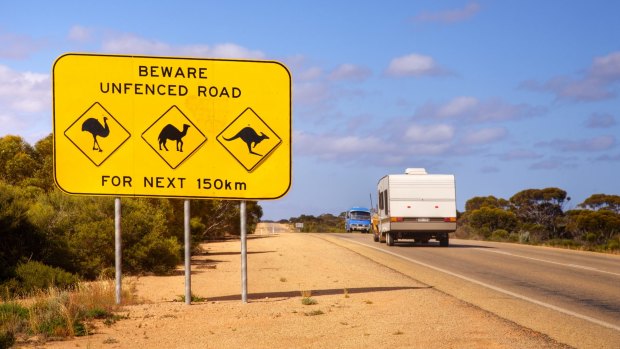
Credit: iStock
Devastating floods in NSW and Queensland earlier this year did enormous damage to many popular roads on the coast and in parts of the regional network, says the NRMA's Peter Khoury. Check the conditions on your route, and any extra weather warnings, before you set off.
"A lot of main highways and roads have experienced quite severe damage and sometimes it's been difficult for councils to fix it," he says. "A lot of times, that's due to the sheer magnitude of the damage, or not having good enough weather to be able to do the repairs.
"That might mean a lot of delays or more careful, slower driving because of the danger of potholes. There might well be hold-ups too, if there are gangs of workers on the road fixing them, with slower speed limits and delays."
Khoury suggests checking live traffic websites along the routes you're planning to drive, listening to local radio on the way, and checking social media.
RULE SEVEN: BOOK YOUR DIGS BEFORE HITTING THE ROAD
Road trips are now enjoying huge popularity around the world so, wherever you're driving, make sure you book your accommodation early, advises Khoury.
With so many of us coming out of two years of virtual lockdown, hotels, motels, holiday parks and short-term stay homes are dealing with unprecedented demand.
"You can't afford to wait until the last minute to decide where you want to stay anymore," he says. "Sort out your dates as early as you can and then book."
RULE EIGHT: ADOPT A HIRE PURPOSE WHEN IT COMES RENTAL CAR RESERVATIONS
Many car rental companies offloaded their vehicles during the pandemic and are yet to replace them in the same numbers, says Guthrie. Tasmania, in particular, has been suffering from severe shortages.
If you're planning to hire a car either from near home or from an interstate location you're flying to, think ahead and book as soon as possible.
"And don't leave it until you actually arrive," she advises. "Booking cars at an airline counter can be a lot more expensive. So if you have left it till the last minute, try to book online on your phone, or go to an out-of-airport location to get a better deal.
"Think laterally, too. Cars on a car-sharing platform like Car Next Door (carnextdoor.com.au), GoGet (goget.com.au) or Flexicar (flexicar.com.au) can potentially be more affordable than a straight rental, and you can borrow them as needed or do the whole trip in them."
FIVE GREAT AUSTRALIAN ROAD TRIPS: OUR EXPERTS' PICKS
BECOME A CAPE YORK CRUSADER
From Cairns, Queensland, either motor up along the picturesque North Queensland coast to Port Douglas and perhaps Cooktown, or even continue on to the top of Cape York for yet more glorious scenery, untouched beaches, and stunning sunrises and sunsets
TURN THE CORNER TO CORNER COUNTRY
Set off in a robust vehicle from Brisbane or Sydney to remote Cameron Corner, near Tibooburra, NSW – the place where South Australia, Queensland and NSW meet, in the middle of the outback with gibber plains, historic pioneer towns, and friendly locals. See visitnsw.com; queensland.com
BID GOOD MORNINGTON TO THE PENINSULA
Experience why the wine country of Mornington Peninsula, Victoria, has become one of Australia's most popular post-pandemic lifestyle escapes as you skip the and travel along the back roads to the towns such as Red Hill and Portsea. See visitvictoria.com
TACKLE THE LONG HAUL OF FAME
From Brisbane to Longreach, Queensland, explore the outback along the dramatic heritage and culture route with stellar attractions including the incredible Australian Stockman's Hall of Fame and Qantas Founders Museum. See queensland.com; stockmanshalloffame.com.au; qfom.com.au/
AROUND AND AROUND YOU GO
Tasmania may seem like only a small island when viewed from the mainland but it's one long near perfect road trip, punching far above its weight in greenery, old forests, beautiful rivers, mountains and some of the freshest air on the planet. See discovertasmania.com
Sign up for the Traveller Deals newsletter
Get exclusive travel deals delivered straight to your inbox. Sign up now.